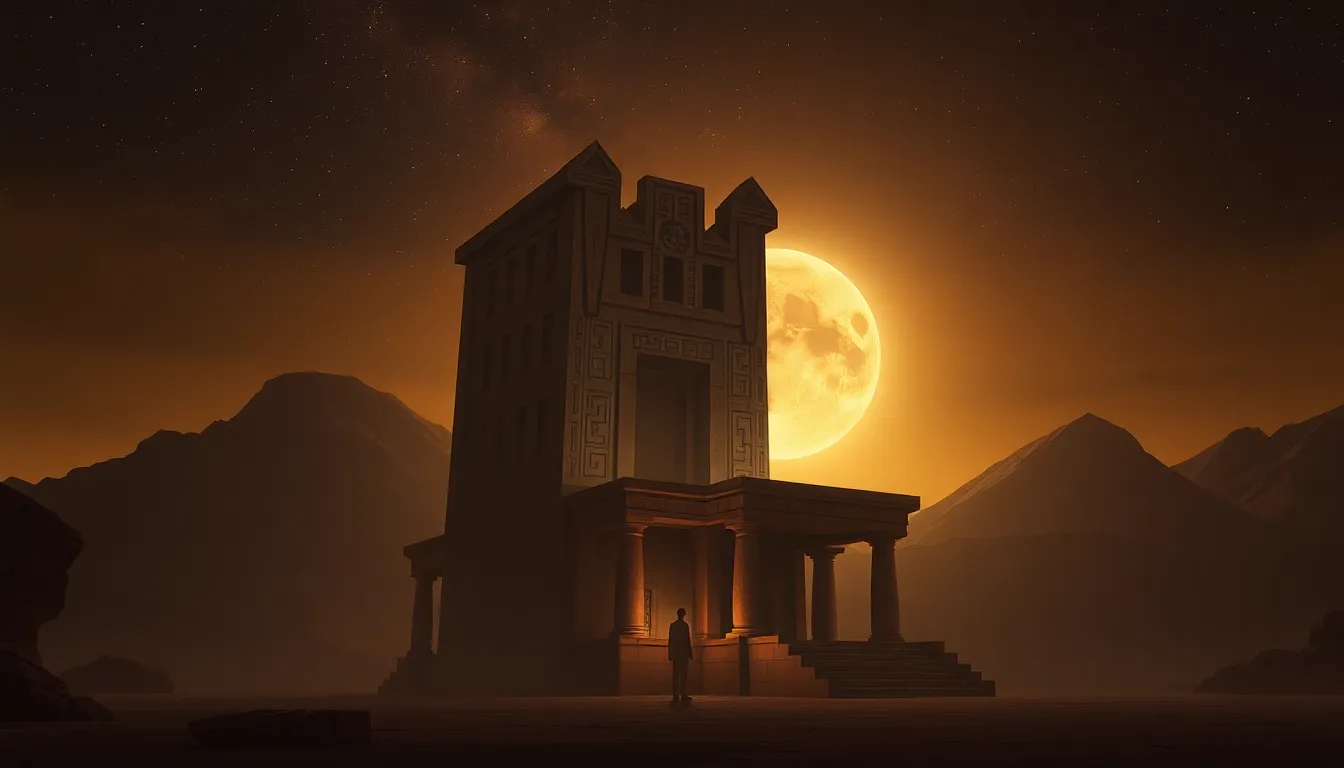The Temple of Toth: The Keeper of Sacred Knowledge
I. Introduction
The Temple of Toth, dedicated to the ancient Egyptian deity of wisdom, writing, and magic, stands as a monumental testament to the significance of knowledge in ancient cultures. Toth, often depicted with the head of an ibis or a baboon, was revered as the scribe of the gods and the inventor of writing. This article aims to explore the historical, cultural, and symbolic dimensions of the Temple of Toth, highlighting its vital role in the preservation and dissemination of sacred knowledge.
II. Historical Background
The origins of the Temple of Toth date back to the early dynastic period of ancient Egypt, with significant developments occurring during the Middle Kingdom. Located in the city of Hermopolis, the temple served as a central hub for scholarly activity and spiritual practice.
Toth played a crucial role in ancient Egyptian mythology, often associated with the moon, timekeeping, and the regulation of the universe. As a mediator between the gods and humanity, Toth was believed to possess the power to maintain cosmic order.
Architecturally, the Temple of Toth featured grand columns adorned with hieroglyphics, intricate carvings, and vast courtyards designed for rituals and gatherings. The layout of the temple emphasized the importance of knowledge, with designated areas for study, meditation, and prayer.
III. The Symbolism of Toth
Toth is primarily represented as a symbol of wisdom and knowledge. His dual nature as both a lunar deity and a god of writing illustrates the connection between the moon’s cycles and the passage of time, as well as the recording of human experience through writing.
- The Ibis: Toth is often depicted with the head of an ibis, a bird associated with wisdom and intelligence. The ibis’s ability to navigate both land and water symbolizes adaptability and the pursuit of knowledge in various realms.
- The Baboon: In some representations, Toth appears as a baboon, an animal known for its vocalizations and perceived intelligence. This highlights the importance of communication in the sharing of knowledge.
Moreover, Toth’s connections with other deities, such as Ma’at (goddess of truth and justice) and Osiris (god of the afterlife), further emphasize his role in maintaining balance and order within the cosmos.
IV. Sacred Texts and Writings
The Temple of Toth was home to the legendary Library of Toth, believed to be a repository of ancient knowledge, containing texts on various subjects, including astronomy, mathematics, medicine, and theology. This library played a crucial role in the transmission of knowledge through generations.
Among the notable texts and scrolls associated with the temple were:
- The Book of the Dead: A collection of spells and prayers designed to assist the deceased in the afterlife.
- The Emerald Tablet: A key alchemical text attributed to Toth, detailing the principles of transformation and the unity of the material and spiritual worlds.
- The Pyramid Texts: Religious writings inscribed in the pyramids, offering insights into ancient Egyptian beliefs regarding the afterlife.
The influence of Toth’s writings extended beyond ancient Egypt, impacting later civilizations, including the Greeks and Romans, who revered him as Hermes Trismegistus, the god of writing and alchemy.
V. Rituals and Practices
The Temple of Toth was a site of numerous sacred rituals aimed at honoring the deity and seeking wisdom. Rituals included:
- Daily offerings made by priests to appease Toth and ensure the continuation of knowledge.
- Rituals of initiation for scholars, symbolizing their dedication to the pursuit of wisdom.
- Ceremonies during the full moon, believed to be a time of heightened knowledge and insight.
Priests and scholars played a vital role in maintaining the temple, ensuring that sacred texts were preserved and teachings were passed down through the generations. Festivals celebrating Toth often included theatrical performances, music, and games, emphasizing the joy of learning and the celebration of enlightenment.
VI. The Temple’s Legacy
The impact of the Temple of Toth on education and scholarship in ancient times cannot be overstated. It served as a model for later centers of learning, influencing educational practices in various cultures.
Moreover, the legacy of Toth’s teachings permeated later religious and philosophical thought, shaping ideas about ethics, governance, and the nature of the universe. Archaeological discoveries related to the temple, including inscriptions and artifacts, continue to provide insights into ancient Egyptian scholarship and spirituality.
VII. Modern Interpretations
In contemporary culture, the Temple of Toth is often referenced in literature, art, and popular media as a symbol of the quest for knowledge. The teachings of Toth continue to resonate, encouraging individuals to seek wisdom and understanding in their own lives.
With a growing interest in ancient knowledge and wisdom, modern scholars and enthusiasts are reviving the teachings of Toth, exploring topics such as:
- Alchemy and its philosophical implications.
- The integration of science and spirituality.
- The importance of balance and harmony in life.
VIII. Conclusion
In summary, the Temple of Toth remains a significant symbol of the pursuit of knowledge and enlightenment. Its rich history, enduring legacy, and the timeless teachings of Toth inspire a continued quest for wisdom in our modern world.
As we navigate the complexities of life, the figure of Toth serves as a reminder of the importance of knowledge, understanding, and the responsibility that comes with enlightenment. The journey towards wisdom is ongoing, and Toth stands as a beacon for all who seek to illuminate their paths.




